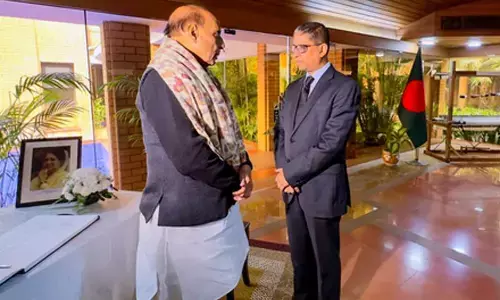What's next for the restaurant industry?

Restaurant industry
The past few months have been both tumultuous and a period of big revelation for the restaurant industry
New Delhi: The past few months have been both tumultuous and a period of big revelation for the restaurant industry. While in the beginning many businesses were sceptical about going back to normal, by the time we reached Unlock 1.0 most realised the permanence of the 'New Normal'.
Dineout launched a survey with a sample set of about 6.6 million diners which revealed that 77 percent of diners couldn't wait to dine out again and 96 percent no longer wanted to stand in a queue.
We thought the diners were just slogging it off in their kitchen turning master chefs but they were also already aware of contactless technology, as 60 percent preferred contactless payments and 81 percent were ready to scan a QR code and order away, says Ankit Mehrotra, co-founder and CEO, Dineout. Learnings from across the globe the survey findings steered us in the right direction and made way for a lot of permanent changes that happened in the F&B industry, he says. Mehrotra points out key highlights:
What does the RESET button entail?
Safety first
While the survey revealed the diners' sentiments, the platforms social media outreach programmes helped dive deeper into their minds. Most of them were craving for their favourite dishes, but for the first time they were concerned about the restaurant safety standards. Hygiene and Safety aren't just new buzzwords; they have become an irrefutable necessity.
"The high adoption rate of contactless dining technology, hygiene accreditation and cleaning services are testament to our findings. We are at the helm of something larger than our imagination, this has set the ball rolling for technology that will change how the world of dining out is perceived," Mehrotra tells IANSlife.
Home delivery and takeaway
For the longest time the Indian restaurant industry played it really safe, sticking to the basics, about 75 percent of the organised restaurants operated with the Dine-in model and very few dabbled with home delivery. But at present they have an opportunity to hit a home run.
Mehrotra points out: "A CGA Peach report pointed out that in 2019, more than 50 per cent of the adult population in Britain had their food delivered to their doorstep. That's about 28.6 million people. Restaurants across the world have started acknowledging the increasing appetite for home delivery and takeaway, while Dine in picks up a steady pace.
"Similarly in our country, many restaurants, especially luxury dine-ins who earlier shied away from delivery, now have re-engineered their delivery menus. This change in behaviour has a significant impact in the market and indicates faster recovery."
Drive-Thru and Curbside
A report by Mckinsey & Co, suggested that 91 percent Indians changed their stepping out behaviour. Similar patterns were observed in the overseas market, in lieu of this most restaurants with available parking spaces converted into drive-thrus and curbside overnight. Chipotle Mexican Grill, a popular chain of restaurants in the US has shared its plans to extend its business model by building drive-thru lanes and hiring more than 10,000 people.
"The Indian counterparts aren't far behind. An early adopter, Timbre in the outskirts of Bangalore is using inresto's contactless dining product suite to let diners experience an open air movie theatre with delicious food served to them in their cars. This is the prime example of adopting technology and adapting in the new normal," he states.
DIY meal kits
A brief look at Instagram posts of people turned chefs during this quarantine tells us the story of their willingness to go to any length, for their favourite meals. While only a handful of them succeeded, most were left shooting arrows in the dark.
To help these diners recreate the chef's magic many restaurants have come up with DIY meal kits. These kits include necessary ingredients and a step by step guide to cooking a restaurant-style meal. While it may seem there is very little profit margin here, the real takeaway is loyalty and brand recall amongst diners.
These are some of key trends that we are witnessing worldwide, Mehrotra says. "This is only the beginning of innovation and technology bringing a much overdue shift in the F&B industry. It is important for restaurateurs to identify such trends and tap into its potential. Like C.S Lewis once said, 'You can't go back and change the beginning, but you can start where you are and change the ending'," he concludes.











